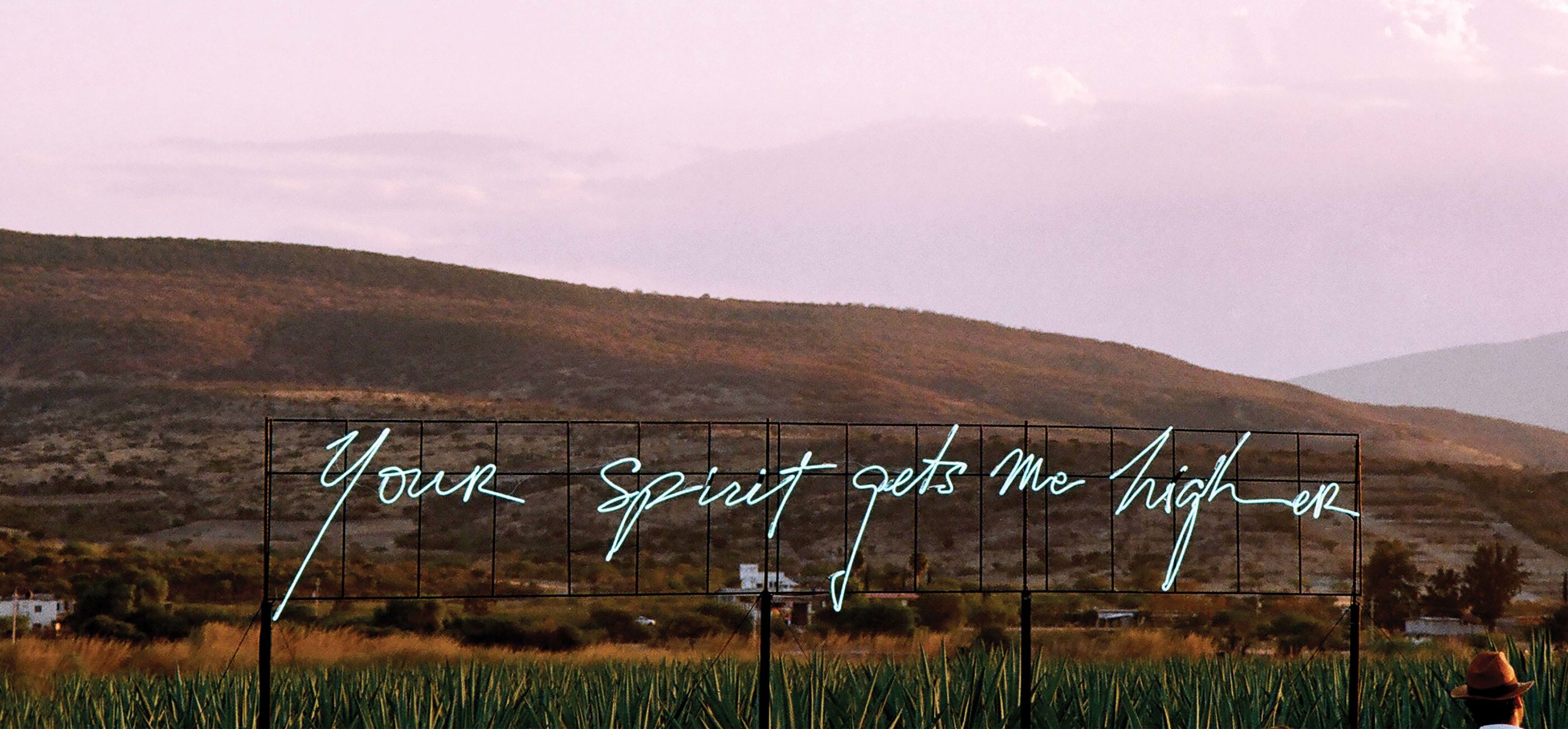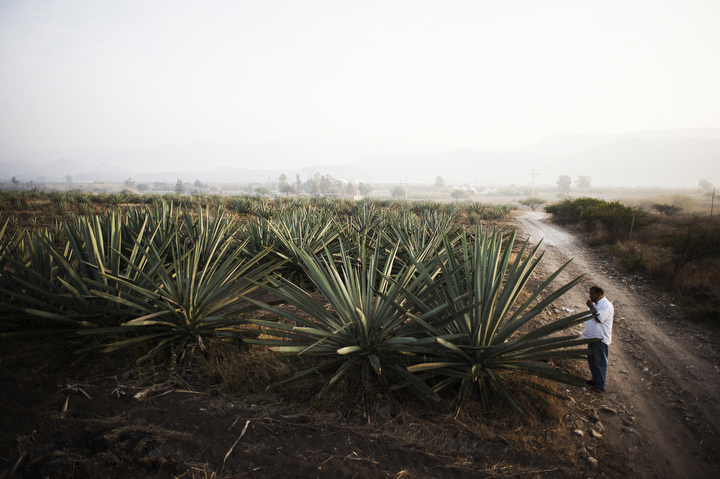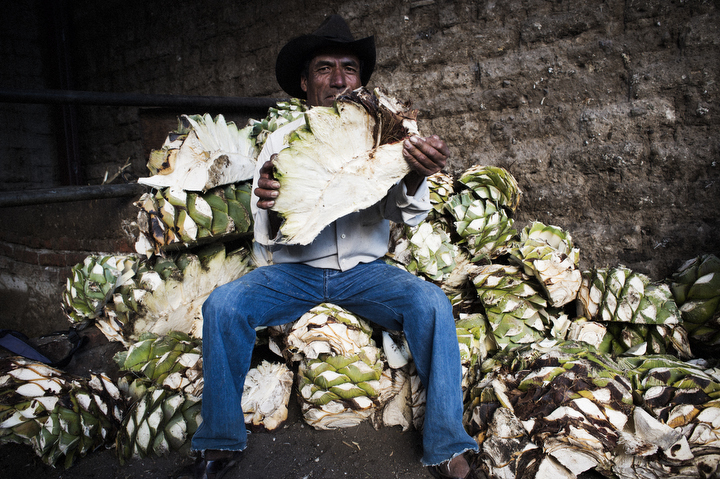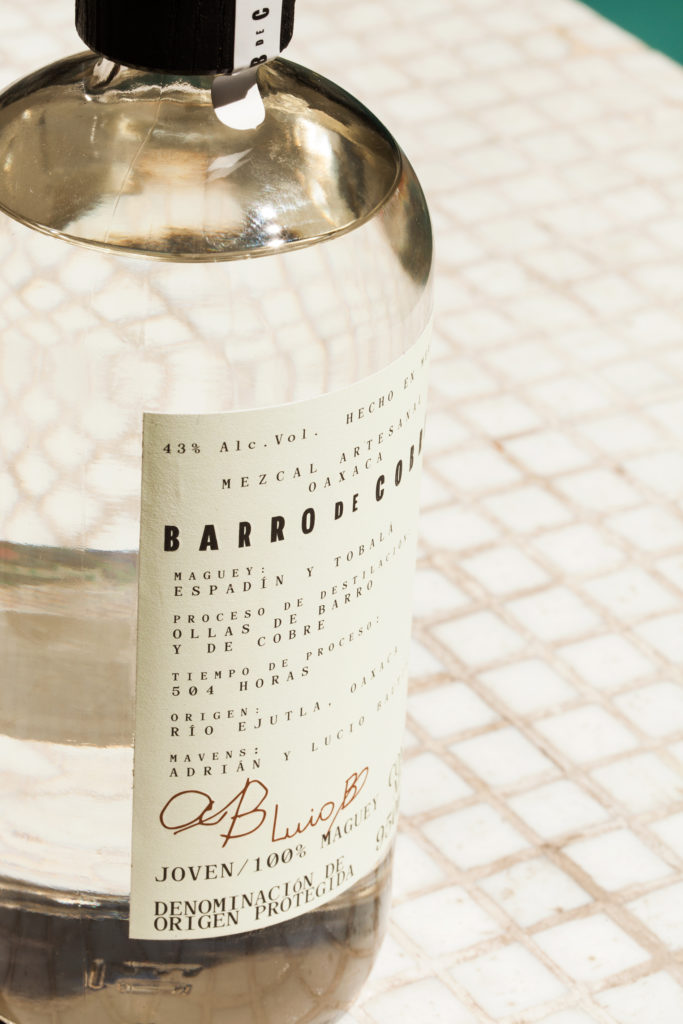December 13th, 2021

Courtesy Pia Riverola
Mezcal isn’t just a spirit. It’s a story. And like many great stories, it’s sprawling and multigenerational, transports you to another place, and instills a profound appreciation for tradition.
We pick up this tale today at a moment of conflict. The spirit’s popularity is stressing natural resources and poses a threat to the handmade, labor-intensive way it’s produced. In 2020, the global mezcal market was estimated to be worth $197 million, and is expected to swell to $738 million by the end of 2027, suggesting a compounded annual growth rate of 13 percent, according to MarketWatch. Riding this popularity, Pernod Ricard bought into Del Maguey, Bacardi into Ilegal Mezcal, and Diageo, which bought George Clooney’s Casamigos tequila, has extended that line to include mezcal. In order to meet rising demand, the large companies are completely altering the fundamentals of ancestral mezcal production. But steadfast makers, ethical importers, and forward- thinking non-profits value the slower, revered tradition, and are fighting to preserve it. The whole process starts with agave—or maguey (ma-gay) as it’s called in Mexico.

Agave field – Oaxaca, Mexico. Courtesy Brian Frank
Hundreds of varietals exist, though only thirty of them can be used for mezcal. Once the agave matures, the piña, or heart of the plant, gets hacked out and roasted in a concave stone fire pit, which is how mezcal gets its distinctive smoky flavor. The cooked agave is then pulverized using a giant millstone called a tahona, which is driven by a horse, ox, or mule. In the most ancestral techniques, two people alternatively pound it into a receptacle called a canoa using a wooden hammer called a mazo, similar to a mortar and pestle. The mash, or tepache, is fermented and then distilled at least twice in copper or clay stills.
Espadín agave, native to Oaxaca and one of the easiest varieties to grow, takes up to ten years to mature, though producers insist it yields the best tasting mezcal. Its long reproductive lifecycle is the greatest challenge to mezcal’s industrialization, for the natural supply cannot keep up with increasing global demand, forcing mass producers to clone agave, genetically engineer it, or simply dilute the final mezcal product with water.
WHY TRADITIONAL
“The big players shouldn’t even be competing with traditional makers,” says Lorena Teran, a local Oaxacan mezcal connoisseur that has worked with local producers for over fifteen years. “It’s a completely different market. In fact, big producers abuse the agave.”
Cloned agave, for example, results in entire fields of “monocrops”, which make entire agricultural regions highly susceptible to epidemics while also removing the flavor nuance from the resulting mezcal. To prevent this, Teran works with an agave nursery under the artisanal El Buho label, an advocate for sustainable planting.
Industrial makers also tend to roast the piñas in massive metal autoclaves with high-temperature water vapor instead of in slow-burning cedar wood pits, finishing the roasting in eight to nine hours instead of over the course of several days. By sacrificing the woodsy, smoky flavor left by the fire roasting, the final product comes out more similar to tequila than to true mezcal.
If the alcoholic content is less than 40 percent, the mezcal is likely diluted with water.

Agave field – Oaxaca, Mexico. Courtesy Brian Frank
In terms of taste, the best way to distinguish mezcal brands from industrial is that no traditional mezcal, even under the same label, tastes exactly the same. Unlike a streamlined industrial process, production done by hand with natural agave results in different flavor and aromatic profiles; each batch might have a mix of fruity, piney, and woodsy accents, which vary based on the harvest, soil profile, ripeness of the agave, and fermentation time. In designing a recipe to extract as much usable mezcal per pound of agave, all that flavor nuance is stripped out.
One of the fastest ways to spot traditional from industrial is by checking the alcoholic content on the bottle. If it is less than 40 percent it is most likely diluted with water, which results in a less balanced, less round profile. “By adding water to something not coming from the still,” says Teran, “the flavor won’t last long on the palate.
Even though industrialized mezcals have less alcohol per liter than artisanal ones, watered down versions will taste like they have more.
“The taste should be silky, almost oily, which you can sense in the middle of your tongue.”
THE BUSINESS OF MEZCAL
As I explored the world of Oaxacan mezcal, one name kept coming up over and over again: Graciela Angeles Carreño, the owner of Real Minero Mezcal. As tradition has it, Carreño’s family has made mezcal using the same recipe for local use at weddings and other celebrations for at least four generations—and probably earlier—that’s just the earliest documentation, says Carreño.
As an ancestral maker, she distills only with clay pots and produces small batches—about 8,000 liters per year, compared to the 10,000 liters per week a midsized tequila maker might produce. One bottle takes 24 days to produce on average, and Carreño sells only to exclusive importers and a handful of restaurants in the U.S., limiting access to her already small supply despite massive demand. New York liquor stores traditionally retail one bottle of Real Minero between $140 and $200.

Ancestral Mezcal Makers. Courtesy Brian Frank
Though Real Minero is among the best mezcals in the world, Carreño’s methods are nearly impossible to scale. As a result, some mezcaleros have discovered ways to retain the flavor notes of traditional recipes while making the production slightly more efficient and business friendly. For example, Bernardo Saenger, founder of Barro De Cobre, which translates to “Copper of Clay,” distills two batches independently in copper and clay stills and then blends them into one batch, creating a highly nuanced flavor profile. At the same time, copper stills are much more efficient than clay ones, which are prone to frequent breakage and require constant maintenance. Use of copper categorizes Barro de Cobre as an artisanal maker instead of an ancestral one like Real Minero, according to the federal mezcal regulatory council that oversees the entire industry, the Consejo Regulador del Mezcal, or CRM.
ONLY IN OAXACA
If the slow production process didn’t limit scalability enough, Oaxaca’s political, cultural, and historical landscapes also play a major role in the growing industry. Much of the vast Mexican state is highly segmented, where ten million residents are governed by six hundred independent, tight-knight, and powerful local villages.
Most of these communities enjoy relative self-governance under usos y costumbres laws, a colonial-era legal precedent where federal authorities grant indigenous communities the right to self-rule with their ancient laws and customs. Most of those early legal traditions do not regard private property, and instead grant ownership of the farmland to the local community governance, similar to a farming commune. As a result, there is nearly no privatized land in the Oaxaca’s rural regions, but hundreds of small farms run by local jurisdictions.
In this system, mezcal producers looking to scale cannot source enough Oaxacan agave from a handful of strategic plantations. They would instead have to endure the logistical nightmare of sourcing and transporting small yields from hundreds of communities. Though there is privatized land with similar climates in neighboring Mexican states such as Puebla, the CRM does not certify mezcals as Oaxacan using Pueblan-grown agave. Plus, Oaxaca’s land has a unique terroir that produces the best Espadín, says Saenger. “Mezcal has brought wealth to these communities,” he continues. “You can see in that they have better trucks and houses. It isn’t wrong.

Ancestral Mezcal Makers. Courtesy Brian Frank
“But if you want to build a huge mezcal brand like Don Julio or another big tequila brand, it will be impossible to source from Oaxaca.”
William Scanlan, who imports family-owned brands almost exclusively (including Real Minero, Mezcalosfera by Mezcaloteca, and Rey Campero), supports local producers by paying them asking price. “My background is in art, where I would never negotiate pricing. If an artist feels a work is worth that amount, who am I to tell him or her that it’s not?”
And that’s the point: mezcal making is an art, and art defies mass production. “The maker’s goal, rather than efficiency, is to get the best result,” says Scanlan. “I think the families that make heirloom agave spirits in the traditional way have this multigenerational wisdom that can be applied to problems that society is facing every day. The big problems—climate change, food insecurity, water insecurity. I think applying that point of view—how do you get the best result, not how do you do things more efficiently—can help us all.”
DECODING THE LABEL
Mezcals certified by the CRM have a QR code that can be scanned to learn about the producer, the process, where it was made, and what type of agave was used. Other descriptors you might find on the label include:
ANCESTRAL VS. ARTISINAL
Mezcal: Allows for modern industrial production methods imported from the tequila industry.
Mezcal Artisanal: Milled agave with copper or clay distillation. Modern equipment such as autoclaves, diffusers, and column stills are prohibited.
Mezcal Ancestral: Must be made from pit-cooked and mallet-crushed or stone-milled agave. Distillation is in clay pots. Stainless steel is prohibited.
Blanco or Joven: Not aged, and no alterations were made after distillation. Most mezcals fall into this category.

Rachel Carrancá. Courtesy Barro de Cobre
Abocado: Flavored or infused after distillation.
Destilado Con: “Distilled with”, also called mezcales de pechuga. The second or third distillation is done with other ingredients, such as fruits, meat, or herbs, in the still itself.
Reposado: Rested in wooden barrels for between two and 12 months.
Madurado En Vidiro: Stored in glass for over 12 months, underground or somewhere with minimal variation in light, temperature, and humidity. This softens the mezcal without lowering the alcoholic content.
BUGAMBILIA MEZCAL COCKTAIL
“Bugambilia” is a purple tree native to the Oaxaca region. For a sweet refresher balanced by earthy, smoky notes, serve this easy cocktail to family by the pool or at a small backyard gathering.

Ana Lorenzana. Courtesy Barro de Cobre
INGREDIENTS
1 1/2 oz Espadín Mezcal (artisinal or ancestral)
1 oz Lemon Juice
1 oz Hibiscus Syrup
2 oz Pineapple Juice
1/2 oz Yellow Chartreuse Liqueur
1 Handful of Ice
INSTRUCTIONS
Mix all the ingredients into a cocktail shaker and shake. Serve like an Old Fashioned decorated with “Sal de Chile,” or chili salt.






